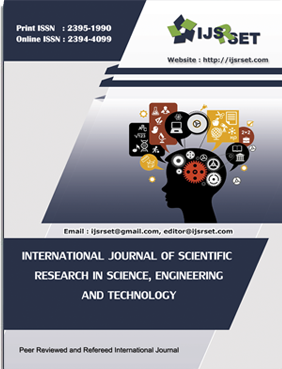Rank Prediction Using Principal Component Analysis
Keywords:
Indian Premier League, Principal Component Analysis, Transformation TechniquesAbstract
"Rank Prediction Using Feature Selection and Transformation Techniques" seeks to establish the rankings of various countries based on their national security and to rank players from the Indian Premier League (IPL). This is achieved through the implementation Principal Component Analysis (PCA). Principal Component Analysis (PCA) is a classical multivariate data dimensionality reductiondata preprocessing, compression and visualization method suitable for many applications in biology, social sciences and engineering. A limitation of PCA is the lack of interpretation due to nonzero loading and inconsistencies in highdimensional elements. Principal component analysis (sparse PCA) mainly aims to solve the above problems of PCA. In the last few years, many studies have been prepared on the development and theoretical analysis of sparse principal component analysis. The aim of this article is to conduct a literature review on the latest developments in highdimensional sparse principal component analysis from the perspective of algorithms and statistical theory. We first provide an overview of PCA and sparse PCA. Secondly, different PCA algorithms are divided into several categories, the structures and methods in each category are explained in detail, and the sparse PCA package is given. Considering that the variance of PCA increases with the increase of the index value, the theoretical analysis of sparse PCA was analysed.
📊 Article Downloads
References
S. Ning-min and L. Jing, “A Literature Survey on High-Dimensional Sparse Principal Component Analysis,” International Journal of Database Theory and Application, vol. 8, no. 6, pp. 57–74, Dec. 2015, doi: 10.14257/ijdta.2015.8.6.06.
Shang, H.L. A survey of functional principal component analysis. AStA Adv Stat Anal 98, 121–142 (2014). https://doi.org/10.1007/s10182-013-0213-1
G. O. Young, “Synthetic structure of industrial plastics (Book style with paper title and editor),” in Plastics, 2nd ed. vol. 3, J. Peters, Ed. New York: McGraw-Hill, 1964, pp. 15–64.
W. K. Chen, Linear Networks and Systems (Book style). Belmont, CA: Wadsworth, 1993, pp. 123–135.
Parul, Ms., M.Jain and Prof. V.K.Shandliya. “A survey paper on comparative study between Principal Component Analysis (PCA) and Exploratory Factor Analysis (EFA).” International Journal of Managment, IT and Engineering 3 (2013): 415-424.
Chao Y-S, Wu H-C, Wu C-J and Chen W-C (2018) Principal Component Approximation and Interpretation in Health Survey and Biobank Data. Front. Digit. Humanit. 5:11. doi: 10.3389/fdigh.2018.00011
Jolliffe Ian T. and Cadima Jorge 2016Principal component analysis: a review and recent developmentsPhil. Trans. R. Soc. A.37420150202 http://doi.org/10.1098/rsta.2015.0202
S. Sehgal, H. Singh, M. Agarwal, V. Bhasker and Shantanu, "Data analysis using principal component analysis," 2014 International Conference on Medical Imaging, m-Health and Emerging Communication Systems (MedCom), Greater Noida, India, 2014, pp. 45-48, doi: 10.1109/MedCom.2014.7005973.
Saha, Sumanta, and Sharmistha Bhattacharya. "A Survey: Principal Component Analysis (PCA)." International Jounal of Advance Research in Science and Engineering 6.6 (2017): 1-9.
Alim Samat, Paolo Gamba,Fellow, Sicong Liu,, “Jointly Informative and Manifold Structure Representative Sampling Based Active Learning for Remote Sensing Image Classification,” IEEE Journals, 2017.
Svante Wold, Kim Esbensen, Paul Geladi,Principal component analysis,Chemometrics and Intelligent Laboratory Systems,Volume 2, Issues 1–3,1987,Pages 37-52, ISSN 0169-7439, https://doi.org/10.1016/0169-7439(87)80084-9.
Downloads
Published
Issue
Section
License
Copyright (c) 2024 International Journal of Scientific Research in Science, Engineering and Technology

This work is licensed under a Creative Commons Attribution 4.0 International License.




